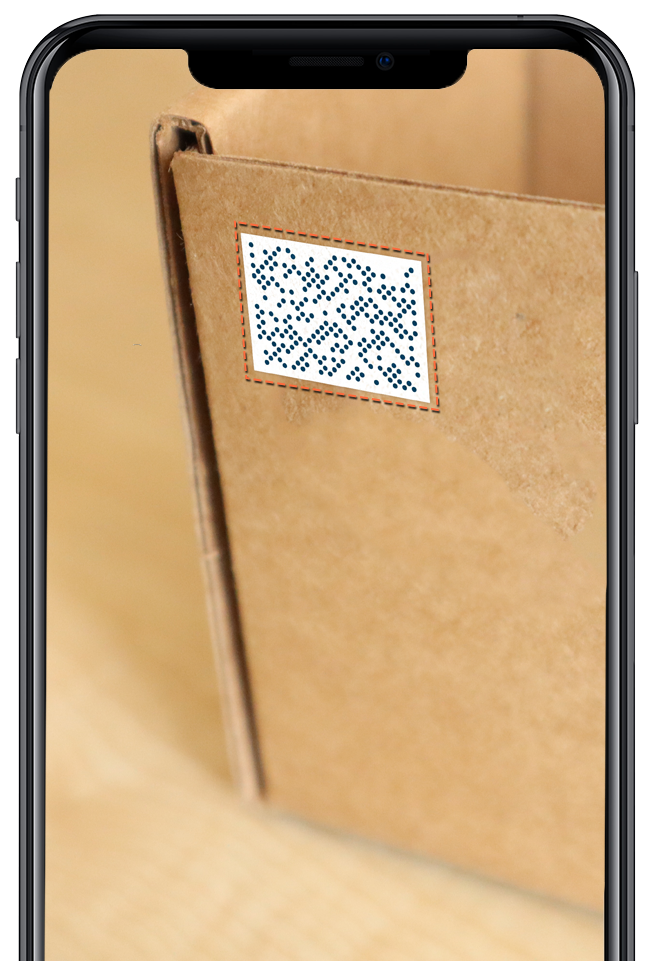QR-Codes can be scanned by software already in any mobile phone, and will forward clients to the web-site embedded in the QR-Code. A hacker can place fake labels over your products that direct your clients to the hackers site, where clients will have personal data and money stolen, leaving you to handle damage to your brand and pay compensation. But you cannot protect against fake QR-Codes, as you can’t visually tell a fake QR-Code, and there is no control over scanning software. DotCodes however are always scanned with proprietary scanner software with tight security, guaranteeing shoppers will only ever be forwarded to a legitimate web-site.
Where
Track & Trace
meets
Dotcode

Why Track & Trace?
As the ‘data-driven economy’ picks up pace, ‘Track & Trace’ is rapidly becoming critical for any business. Data is increasingly being gathered and exchanged by a network of vendors to derive value from it, including tracking of ‘Key Performance Indicators’ (KPIs), Logistics, Production-Control, Accounting, Reconciliation, Security and AI-driven decision support systems. ‘Track & Trace’ is here to stay, and is increasingly becoming the core on which a business builds its operations.
Optical Codes
Central to ‘Track & Trace’ are machine-readable optical codes. These are attached to items to be tracked, and scanned and logged at key logistical hubs. This ‘scanning’ function reads the optical code, (typically using just the camera on a smartphone, or via a dedicated scanner), and logs the optical code, and typically also logs the time and location of the scan, as well as the ID of the scanner operator. This logged data then usually drives any number of real-time enterprise applications.
Track & Trace
Track & Trace
Track & Trace
Track & Trace
Track & Trace
Dotcode Labelling
Dotcode Labelling
Dotcode Labelling
Dotcode Labelling
Dotcode Labelling

Why DotCode?
DotCode is an optical code that meets with industry standards & regulatory requirements for product identification & serialisation. The DotCode standard is in the public domain, so its codes can be freely generated without having to acquire licenses or pay royalties. Whilst other optical codes such as QR-Codes are also often considered, they are not appropriate for ‘Track-&-Trace’ applications for the following reasons:
DotCodes - High-Speed Product Marking
DotCode was designed for industrial, high-speed marking with continuous ink-jet or laser ablation so it can easily be printed or etched directly onto manufactured items at high speed. DotCodes have been used to great success for ‘on-pack serialisation’ in the European tobacco industry where fast-paced production environments (often producing up to 1,000 packs per minute) require a high-speed product marking solution. Such printing speeds and reliability of scans are not possible with QRCodes.
